

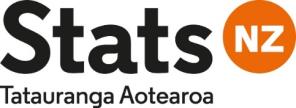 Project name
Project name
Sexual Orientation, Gender and Intersex in the General Social Survey (GSS) 2018
Initiated by
Diane Ramsay
Prepared by
Calli Seedall
Document purpose
Given the short timeframe between now and the GSS 2018, there are two options for progressing
the work to include Sexual Orientation and Intersex. The purpose of this document is to outline the
two options and the opportunity/cost associated with each. The two options are:
1. Prioritise the inclusion of these topics in the main GSS and commit resource to
developing a robust set of topic specifications, questions, (including method of
collection), technical solutions and business processes.
2. Not to progress a question or collection method for Intersex in the GSS and to use a
Sexual Orientation question and methodology similar to the GSS field test, with some
simple improvements such as moving the demographic questions.
Note that there is no time to consider a question on Gender Identity for the GSS. This would
require a great deal of stakeholder interaction and conceptual thinking, which cannot be
undertaken in only a couple of months.
Recommendation
The Enterprise Prioritisation Team identify their preferred option and either:
1. Approve option one and the prioritisation of 1.5 FTE for 6 months across LMH, QMD
and DBS teams to scope, investigate and develop questions on Sexual Orientation and
Intersex in the GSS 2018. As this would be new development work, not currently
planned, this will mean deprioritising the following projects across the respective units:
a) In LMH it is likely this will affect development of the Voluntary work supplement to
HLFS.
b) In QMD, this is likely to impact on the development of other LMH survey developments,
such as Voluntary work or HES changes.
c) In DBS, in addition to increasing the workload placed on the Blaise developer for the
GSS Main Survey, there shall likely be a significant impact on Blaise development for
HLFS Q131 and HES Expenditure.
d) In DBS, there may also be resourcing contention introduced, albeit to a lesser extent than
that stated above, affecting Blaise, .NET, and SAS, development for HLFS Q130, the
Voluntary Work and Redundancy supplement, and HES Income.
In addition, if a standard is required for Intersex, C&S may need to prioritise this work over
other classifications that are being worked on.
Note that, if the Enterprise Prioritisation Team elect Option 1, DBS engagement would
necessitate that a request for work complies with their front door policy. In situations where it
is not possible to sacrifice planned BAU activity in preference to a task associated with this
new development, then all DBS costs incurred against that task shall become chargeable to an
appropriate business cost centre.
2. Approve option 2 which is the use of the current Sexual Orientation question only.
Proposed project
Na
tolerances
Section A – Strategic context for the investment proposal and case for change
Drivers for
Drivers/opportunity:
change/problem/
Following the decisions made by the Government Statistician about the final content for the 2018 Census,
opportunity
Labour Market and Household Statistics Unit (LMH) were asked to add one or more of Sexual
orientation, Gender, and Intersex to the 2018 General Social Survey (GSS). The GSS is an interviewer-
Project Mandate Template
Page


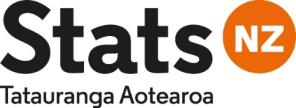
administered survey which means that more development in these areas is required than what was tested
for Census.
Due to time constraints, LMH were not able to develop questions on Gender or Intersex for the GSS field
test to be conducted in September 2017, however the question tested for Census 2018 on Sexual
Orientation has been included in the field test.
There is a well-documented need from stakeholders for data on these three topics. This information need
can be broken down into three key objectives:
To allow individuals to see themselves in the data, and with regards to intersex adults, to allow a
valid answer to the sex question which currently only accounts for male and female responses.
To identify overall prevalence.
To identify specific population groups within the wider LGBTIQ population.
Inclusion in the GSS would also allow some comparison of well-being outcomes between the
heterosexual and non-heterosexual populations within New Zealand (it is estimated that all other sub-
population groups would be too small to output).
Key stakeholders:
The Human Right’s Commission
LGBTIQ community
Ministry of Health
Research groups
Problem:
The GSS goes into the field in April 2018 which leaves very little time to develop a robust set of
questions for these topics. Prioritisation and additional resource is needed to complete this work.
Investment
To prioritise the investigation and development of robust topic specifications, questions, (including
proposal
method of collection), technical solutions and business processes needed in order to include questions on
Sexual Orientation and Intersex in the GSS 2018 main collection (April 2018 – March 2019).
In situations where it is not possible to sacrifice planned BAU activity in preference to a task associated
with this new development, then all DBS costs incurred against that task shall become chargeable to an
appropriate business cost centre.
Outcomes
To enable the collection and output of robust data on these topics.
expected
To ensure that due consideration and process has been followed to represent stakeholder
requirements.
To learn more about the collection of these topics in order to scope a larger development plan
going forward.
Alignment to
This investment proposal will contribute to:
strategies
Results
Customer defined statistical relevance is driving the focus of the maintenance and
2.7
prioritisation of statistics for critical decision making.
Objectives
The development of robust topic specifications, questions (including method of collection), technical
solutions and business processes needed in order to include questions on Sexual Orientation and Intersex
in the GSS 2018 main collection (April 2018 – March 2019).
Expected benefits
To allow individuals to see themselves in the data, and with regards to intersex adults, to allow a
valid answer to the sex question which currently only accounts for male and female responses.
To help mitigate the risk to Census
Project Mandate Template
Page


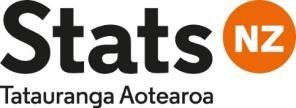 Response to
Response to
Na
Māori
Change Impact
Area impacted
Change impact
Impact
FY/QTR
External stakeholders
Being seen to be doing something for the
High
2017/18
communities
Protecting census
Labour Market &
Increased knowledge of these topics to aid
Medium
2017/18
Household Statistics,
with future development work in this area
Leading stakeholder communication for this
project
Coordination of the project
Questionnaire
Increased knowledge of these topics
Medium
2017/18
Methodology and
Cognitive testing requirements
Development
Includes the development of an IT solution
for delivery of the questions
Population Statistics
Understanding of impact (specifically
Low
2017/18
around changes to the current sex
question)
Statistical
Understanding of impact (specifically
Low
2017/18
Methodology
around changes to the current sex
question)
Classifications and
Timelines for development of a
Low
2017/18
Standards
classification and standard for Sexual
Orientation will be affected
Census 2018
Being seen to be doing something for the
Low
2017/18
communities
Protecting census
Field Interviewers
Learning to work with a potentially difficult
Medium
2017/18
question and a new methodology
DBS
Implementation of an IT solution for
Medium
2017/18
delivery of the questions
Prioritisation ahead of other Blaise
development (other Household surveys)
Key stakeholders
The key stakeholders that have an interest in the expected outcomes or can influence the investment
proposal have been identified as follows:
From C&S:
Our key stakeholders (in our working group) are SSC, MSD and MOH.
Project Mandate Template
Page


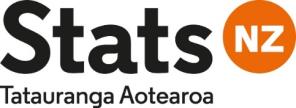
Others that attended the kick off workshop in July: MOE, HRC, MVCOT, MOJ, DIA,
Tiwhanawhana Trust
Scope
Already delivered as part of this mandate (see appendix A):
Decisions made for including a question on Sexual Orientation in the GSS 2018 field test.
In scope
Communication with stakeholders on data requirements and question development for the GSS
2018. Will need to include discussion about outputs.
Detailed design of topic specifications including how these questions will address stakeholder
requirements.
Question development including delivery methodology and any testing as required.
Creation / build of the Blaise solution.
Agreement on outputs and use of the data between LMH, Population Statistics, Statistical
Methodology.
Out of scope
Development of a statistical standard and/or classification for Sexual Orientation (although this
is a dependency) or Sex/Intersex.
Wider stakeholder communications not specifically addressing the GSS 2018 development.
Any future development of these topics not specifically for the GSS 2018.
Interdependencies
Dependency type
Description of dependency
Inward
GSS 2018 Field test completion
The development of a robust classification and standard for Sexual
Orientation by end January 2018.
Outward
Section B - Proposed governance and approach
Proposed governance
Proposed approach
Section C: Draft timeline, costs, duration and other information
Draft timeline and
high level key
Estimated
milestones
Key milestones
Timeline
GSS 2018 field test debrief
9 October 2017
GSS 2018 Collection Start
1 April 2018
Estimated:
Na
- project costs ($k)
- duration
- NPV
- IRR
- discounted payback
period
Duration
The proposed duration of this initiative is 6 months (September 2017 – February 2018)
Project Mandate Template
Page


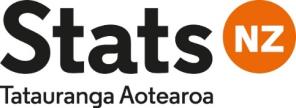 Other information for
Other information for
If this initiative is not approved, LMH will not be able to develop questions on Gender or Intersex
consideration and
for the GSS 2018. However, assuming there are no issues presented in the September field test, the
risks
Census question on Sexual Orientation could be included using the decisions made for the field test
(i.e. with no further development of the question or methodology).
Risks
There are some risks associated with including questions on Sexual Orientation, Gender and
Intersex in the GSS:
There may be a negative impact on the response rate because respondents are not happy
answering these questions.
There may be a negative reaction from stakeholders if we cannot output anything
meaningful.
There may be a negative reaction from stakeholders because we are not intending to
include the full suite of questions including Gender Identity.
Due to the mode of the survey, there are some concerns for health and safety, both of the
respondent and the interviewer.
There is a risk to not developing a statistical standard for Intersex at the same time as
including the question. These may end up unaligned.
For information only:
1.
Contact Enterprise Portfolio Office (EPO) for assistance if required.
2.
Circulate to stakeholders for review – refer to Document Development table.
3.
Delete all instructions in blue italics <like this>.
Document development
Business Group/Unit
Role
Name
Enterprise Portfolio Office (EPO)
Manager Investment Governance & Support
Finance – Management Accounting
Senior Management Accountant
Digital Business Services (DBS)
Manager Development Operations
Robin Smith
Population statistics
Senior Manager
Peter Dolan
Field Collections
Senior Manager
Kat Keelan
Standards & Design
Senior Manager
Becky Collett
Statistical Methods
Manager
Penny Barber
Census 2018
Senior Manager
Gareth Meech
Project Executive sign-off/endorsement:
Title
Name/Signature
Sign-off date
Senior Manager, Labour Market and
Diane Ramsay
dd/mm/yy
Household statistics
Project Mandate Template
Page


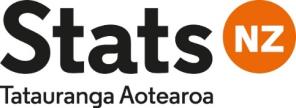 Appendix A
GSS 2018 Field Test: Sexual orientation, Gender and Intersex
Appendix A
GSS 2018 Field Test: Sexual orientation, Gender and Intersex
Following the decisions made by the Government Statistician about the final content for the 2018 Census, Labour
Market and Household Statistics Unit were asked to do a quick investigation into the feasibility of adding one or more
of Sexual Orientation, Gender, and Intersex to the 2018 General Social Survey (GSS).
At the time that we were asked to investigate the inclusion of these topics into the GSS field test, development of the
2018 GSS content including its supplement on Housing and Physical Environment was well advanced. For this reason
some quick, pragmatic decisions had to be made about inclusion in the field test. This paper sets out those decisions:
1. There was not enough time to include questions on either Intersex or Gender Identity in the GSS field test.
These two topics require a lot more development work. However, a question was included on Sexual
Orientation.
2. The Sexual Orientation question used will be the same as tested in the 2018 Census test i.e.
Which of the following options best describe how you think of yourself?
Heterosexual or straight
Gay or lesbian
Bisexual
Other (please state)
Choose not to answer
3. The classification will follow the draft classification developed for the Census test and may change once the
final classification is completed.
4. We plan to only ask this question of respondents aged 18 and over. (The GSS is asked of 15 year-olds and
over).
5. The Sexual Orientation question will be asked at the end of interview to mitigate against a risk that
respondents will end the interview at this point.
6. The question will allow the respondents to identify a code on a showcard rather than reading the response
aloud. This, along with the “choose not to answer” option will minimise confidentiality concerns.
7. We have implemented an option that allows interviewers to skip the question if they feel this might impact
on their personal safety or the safety of the respondent.
8. An additional set of prompt questions has been developed to gain further information from the field test.
These will be answered by interviewers after completion of each interview and training will be provided on
why this question is important and what we hope to learn through the field test.
Project Mandate Template
Page

















